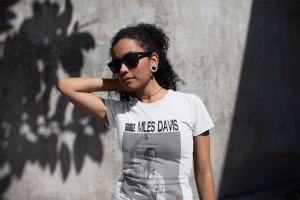Miles Davis
He performed sold-out concerts worldwide, while branching out into visual arts, film, and television work, before his death in 1991 from the combined effects of a stroke, pneumonia and respiratory failure. In 2006, Davis was inducted into the Rock and Roll Hall of Fame, which recognized him as "one of the key figures in the history of jazz". Rolling Stone described him as "the most revered jazz trumpeter of all time, not to mention one of the most important musicians of the 20th century," while Gerald Early called him inarguably one of the most influential and innovative musicians of that period. Miles Dewey Davis III was born on May 26, 1926, to an affluent African-American family in Alton, Illinois, 15 miles (24 kilometers) north of St. Louis. He had an older sister, Dorothy Mae (born 1925), and a younger brother, Vernon (born 1929). His mother, Cleota Mae Henry of Arkansas, was a music teacher and violinist, and his father, Miles Dewey Davis Jr., also of Arkansas, was a dentist. They owned a 200-acre (81 ha) estate near Pine Bluff, Arkansas with a profitable pig farm.

























































